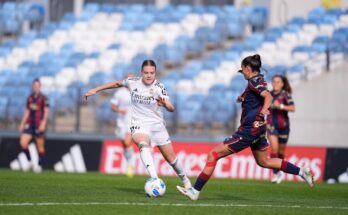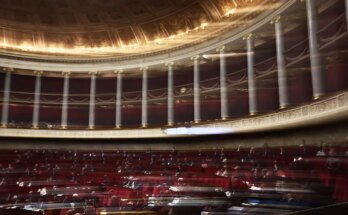Like every autumn, Paris Photo invites you to rethink your look. Every work, every exhibition project and every book proposes to understand photography not as an object of consumption, but as a form of visual thought in constant transformation. Faithful to this impulse for renewal, in its 28th edition the fair reconfirms its ability to successfully reinvent itself, unfolding a fertile territory where consolidated names mix with new voices, affirming photography as a continuously evolving process, where the imprint of the past is integrated into dynamics that expand its languages and methods of representation.
At the entrance to the Grand Palais, the Poggi Gallery displays a 36-meter-long wall on which a selection of images taken over the last four decades by French photographer Sophie Ristelhueber, winner of the 2025 Hasselblad Prize, reveal the turbulence of our world. In a premeditated way, the artist avoids bringing order to chaos and arranges the images in a composition that condenses the wounds and tensions of our time.
From the past to the future: photography as an open process
“Permeable to video, sculpture or performance“Photography is an open medium whose history revisits the fair, anticipating its future”, warns Anna Planas, artistic director. Thus, the experimental spirit that permeates the works of the pioneers of the medium presented in the Hans P. Kraus gallery reverberates throughout the fair. Inside the section Prismsdebuts this year Malaga Gallery Isabel Hurley, with an installation by Marisa González. The series Termofax (1975-77), created using a thermal reproduction device, it reveals the author’s early fascination with the relationship between technology and artistic creation. It is a collaborative work in which she asked her fellow Washington art students to depict the pain of women tortured in Pinochet’s prisons in Chile. “Already in 1971 I used the first color photocopier”, underlines the Biscayan artist. “In Spain, at the School of Fine Arts where I studied, we looked to the past. I was interested in the future: incorporating photography, video and new generative systems. Photography was just a process within my work.”
Fraenkel stands out in the gallery Sleeves and Covers (Nove 12″/No 50) (2025), by Christian Marclay, where the artist prints used record covers which, with their folds and signs of wear, evoke the tactile memory of sound and the passage of time. At Pace Gallery, Richard Learoyd’s wilted flowers, captured with a room-sized camera obscura that directly exposes photographic paper to light, transform into a poetic meditation on human frailty. Syrian multidisciplinary artist Huda Takriti presents a sculpture created with textile prints at the Crone gallery, while at Stevenson the South African Guy Tillim intervenes on his prints pigmented with acrylic paint, signaling a turning point in his aesthetic exploration. Small in scale, enormous in artistry, are Jack Davison’s portraits at the Cob Gallery.
Between reality and fiction
Tania Franco Klein and Carlos Idun-Tawiah address, from different perspectives, the tension between reality and fiction as a way to explore what is human. In Rosegallery, the Mexican photographer investigates the psychological pressure of our time through carefully constructed scenes of intense colours. “My projects are conceptual; the self-portrait is functional, it’s not about personal identity,” he warns. Idun-Tawiah transforms photographic archives into luminous stories about everyday life in Accra. “My inspiration comes from the Senegalese cinema of the 60s”, explains the Ghanaian author at the stand of the Galería Alta, where his works are exhibited. “I try to bring my subjects to life in the most natural way possible, letting them act freely within the scenarios I construct for them. This is how I preserve the truth of my memories through an imaginary narrative.”
Global voices and familiar landscapes
This year the heart of the fair is busy Voicesa vibrant sector that brings together for the first time galleries from Asia and Eastern Europe, among others, bringing new perspectives and geographies to the international scene. Edited by Devika Singh e Nadine Wietlisbach, is structured around landscape and family ties. Among the most sensational proposals stands out an unpublished series by Justine Kurland, presented by Higher Pictures, where the American artist paints still lifes of her father collage made by the series Nudes From Lee Friedlander: a gesture of reappropriation that challenges male legacy and rewrites fatherhood from a subversive voice. In the Vadehra Art, The village on the HighwaAND, by Indian photographer Gauri Gill constructs an authentic architecture of resistance, a tribute to the inventiveness and dignity of farmers who had to face agricultural deregulation that threatened their already fragile way of life.
In the digital sector, curated by Nina Roehrs, photography expands towards the creation of images that question our present. The Nagel Draxler gallery contrasts two generational approaches: Martha Rosler presents In place of the public: airport seriesan ongoing project that sees airports as transition spaces where forms of exchange, work, behavior and control develop. The work questions how capital, surveillance and control shape these environments; After 9/11 he incorporated lyrics that reflect the increased fear and scrutiny when traveling. On the other hand, Anna Ridler approaches the image from a technological approach, exploring measurement and quantification linked to the natural world, using data, especially self-generated, to create original narratives through digital media and tools such as machine learning. “Together, these exhibitions offer a reflection on our times,” warns Maja Funke, the gallery’s new media art director, “from analog photography documenting the public and the transitory, to the younger generation seeing the public reflected in public images on the Internet, showing how current technological tools influence the perception of reality.
Located on the balcony of the Grand Palais, the Emergent sector presents 20 individual projects, among which the work of the British Louis Porter in Chiquita Room stands out. The project addresses the distance between objects, ideas and people through three different series. Using scientific and educational materials found in libraries, archives and flea markets, he transforms them using photography and other diverse materials to reveal the paradox of separation in modernity. In the Cámara Oscura gallery, Claudia Fuggetti addresses climate change through chromatic interventions that reflect the persistence of life and the tension between nature and artificiality. The Spanish participation in the fair this year, made up of ten galleries, is completed by ADN, Alarcón Criado, Gregory Leroy – Nuevo Impulso, Hama Gallery, Nordés, Rocío Santa Cruz and Sorondo Projects, as well as one publisher: RM.


